An actress, her pet lion, and the most dangerous movie ever made
Science
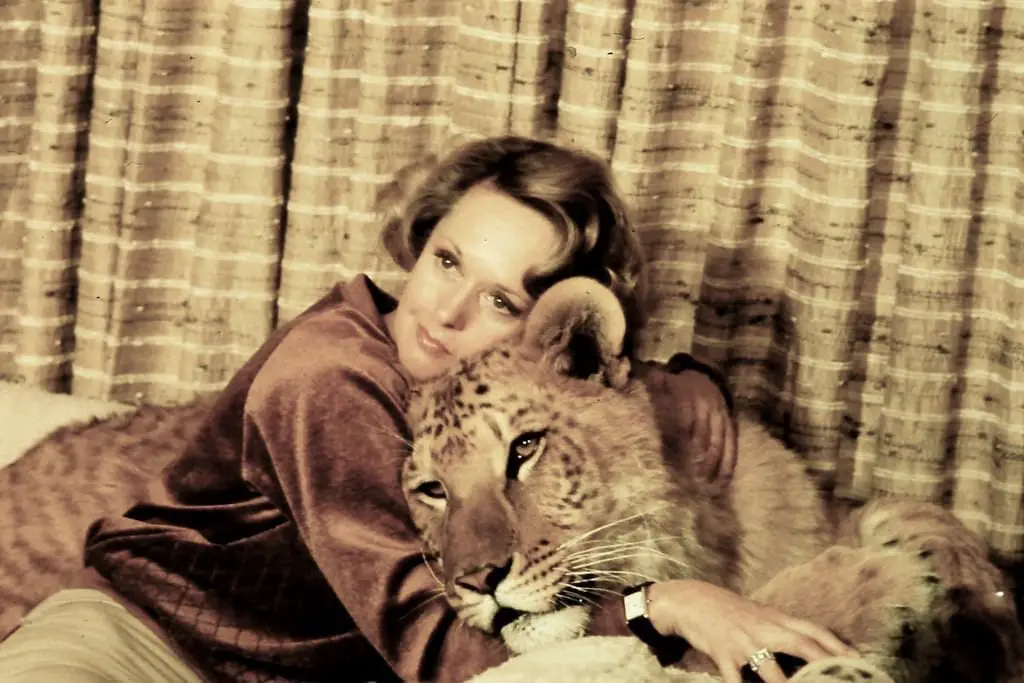
1. Before the lion, Tippi was a model
ROAR the movie/Flickr
From Hollywood starlet to animal welfare activist, Tippi Hedren has had a wild life. After stardom and mistreatment, she traveled to Africa and met her very first lion. The animal sparked something in her that shaped the rest of her life. Before she knew it, Tippi was living with her own lions and making a feature film that later became known as the most dangerous movie ever made. She now runs her own animal sanctuary. How did she get to that point? Well it all started with a little movie called “The Birds.”
Long before she lived with lions, Nathalie “Tippi” Hedren was born in Minnesota in 1930. She later moved to California as a high school student and then started a modeling career in New York soon after. Hedren always loved animals, with pet cats and dogs throughout her life, but she would take that love to new and dangerous heights.
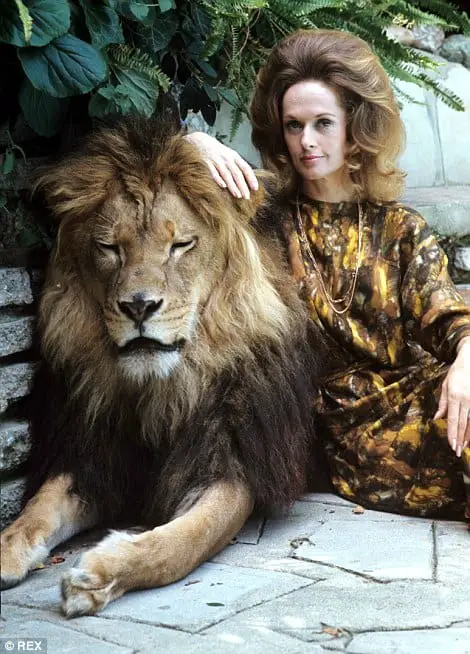
Eternally Sunny
In New York, she met her first husband. They had a daughter, Melanie Griffith, who went on to become an actress herself (she starred in Working Girl). After some years, the mother and daughter moved back to California, near Los Angeles. Hedren started shooting commercials, which is how she got to the next step in her career: acting.
2. She starred in Hitchcock’s “The Birds”
The well known director Alfred Hitchcock saw Hedren in a commercial and called her, asking her to star in “The Birds.” But Hitchcock was not always nice to her; he was possessive and creepy. For the final scene, Hedren was assured that they were going to use mechanical birds, but when she arrived on set there were cages of live birds.
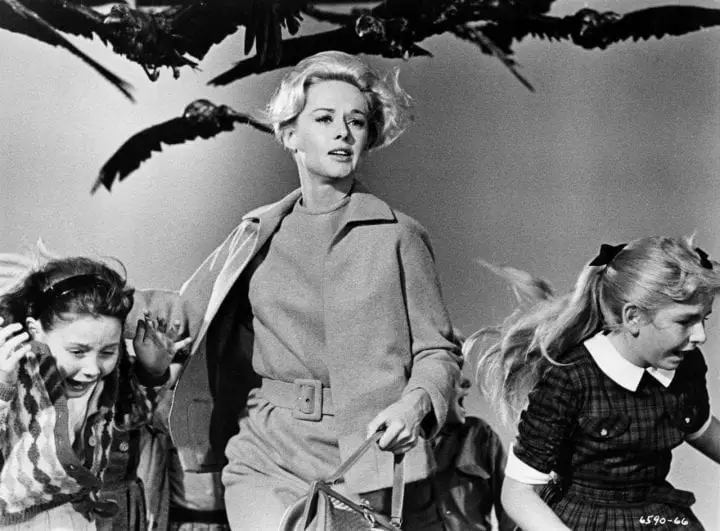
The Birds/We Are Movie Geeks
The handlers, clad in arm length gloves, threw pigeons, gulls, and crows at Hedren. One of them almost took her eye out, luckily slashing her cheek instead. Hedren spent four days enduring the grueling attacks. Somehow, this didn’t turn her off from animals entirely, because later she willingly subjected herself to even worse treatment.
3. Hitchcock started and ruined her acting career
Despite Hitchcock’s disconcerting behavior toward her, Hedren did another movie with him, “Marnie.” But his actions toward her became unbearable and she decided to not do any more movies with him. In turn, he decided to ruin her career to the best of his ability. He even turned down movie offers on her behalf.
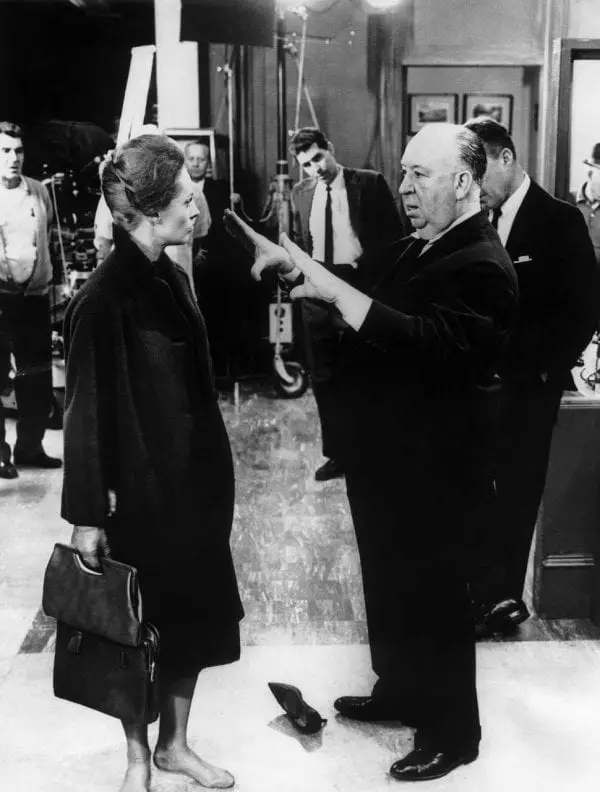
People
As a result, Hedren missed her chance at continuing her stardom. After “The Birds” and “Marnie,” she was mostly in less popular movies or in smaller roles, although she kept acting and still does. But if Hitchcock hadn’t sabotaged her, she may never have gone down the wild path she did.
4. Tippi found lions in Africa, and never went back
In the late 60’s, Hedren married her agent Noel Marshall and went to Africa to film two movies. While there, Hedren first encountered the animals that would change her life: lions. She and Marshall watched a pride of about 30 lions take over an abandoned house. They were everywhere.
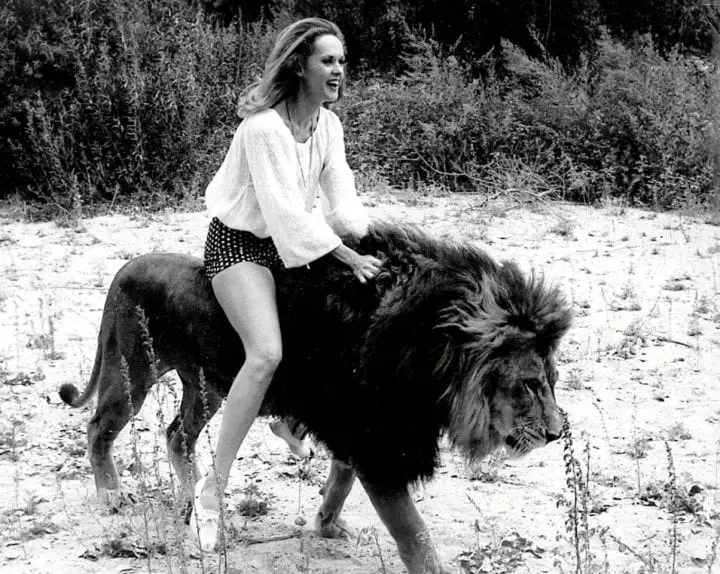
Eternally Sunny
There were lions on the roof, lions sleeping in window frames, lions lounging on an old porch swing, and one lion claimed a broken rocking chair. “We were delighted with the way they adapted themselves to living there,” said Hedren.” And they were so funny we knew we had an idea for a picture.” A picture that upended her life completely.
5. Tippi was fueled to make the movie because of devastating hunting
Tippi didn’t just think lions hanging out in a house would be a great movie idea, she also thought it would serve a purpose she believed in. Many different animals in Africa were being poached (illegally hunted) and she wanted to call attention to the animals in need. But her movie didn’t exactly paint the lions in a positive light.
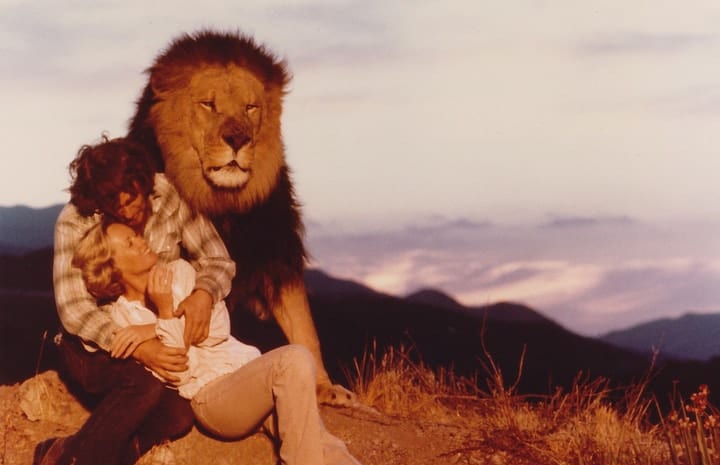
ROAR the movie/Flickr
“During those years, environmentalists all over the world were telling people that if we didn’t do something to stop this insanity of poaching, by the year 2000 the hunters would have killed all of the wild animals,” Hedren said. “It was becoming a huge issue, and we decided to do a movie about it.”
6. The movie’s working title was “Lions, Lions, and More Lions”
Hedren’s husband, Noel Marshall wrote the script for their lion movie. He originally titled it “Lions, Lions, and More Lions,” which is basically a description of the entire plot. Perhaps a more accurate title would be “Lions, Lions, and More Lions (Plus Some Other Animals).”

Roar/Indiewire
The “plot” was that Noel worked as a zoologist in Africa and lived on a piece of land with over a hundred big cats, most of which were indeed lions. His family came to visit, so he went to pick them up at the airport but somehow they were already on their way to his place. In his house, they open all the windows and let in the whole cast of cats. Running, screaming, mauling, and hilarity ensue.
7. No one would lend them any lions for the movie
But in order to film such a movie, Hedren and Marshall needed, well, a ton of lions. Back then, they did not have the fancy CGI that is so delightfully bringing us The Lion King remake. The would-be filmmakers went to several lion trainers back in California, hoping to rent at least 30 for their movie.
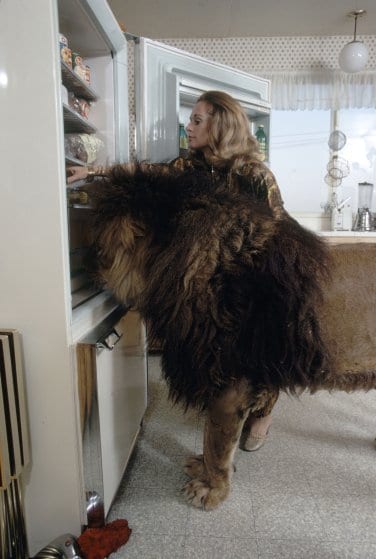
Michael Rougier
They were told a resounding, “No.” Putting that many adult cats together would be dangerous and disastrous, because they would likely all fight each other. If Hedren and Marshall really wanted to do this movie, they would have to raise the lions together. And if they really wanted to understand these animals, a man named Ron Oxley told them, they would have to live with one.
8. There were a lot of rules about how to live with lions
Ron Oxley was starting an animal rental business and decided he could lend his lion to Hedren and her family. But first, they had to learn a thing or two about the animals. Hedren later said, “it’s not good to be scared around lions. Ron told us exactly what we could do and what we couldn’t do. And we listened very carefully to him.”
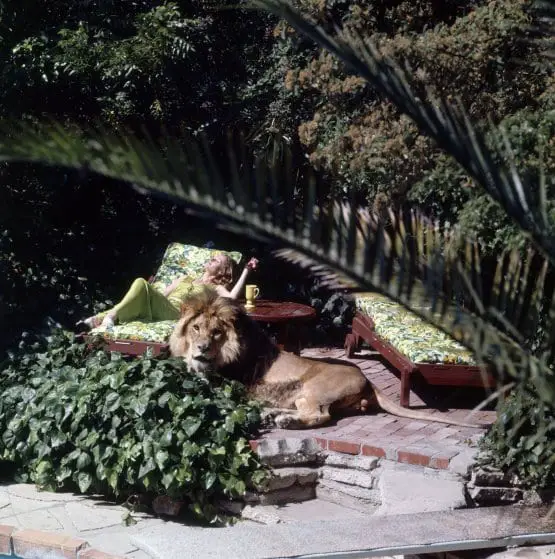
Michael Rougier
They were told to respect the lion. Don’t scratch his nose. Don’t annoy him. And don’t suddenly run up and throw your arms around him. Also, don’t turn your back on him. Pet him under his chin or on his mane, but not his face. And make sure he doesn’t get possessive about anything. With all that in mind, Hedren welcomed a new member into their family.
9. Neil was a trained lion and was fed enough to keep him full
Neil, a whopping 400 pound male lion, was trained. He’d actually been on TV before and Oxley had spent a lot of time and effort on training him and bonding with him. So when Hedren welcomed him into her home, Neil wasn’t a wild lion.
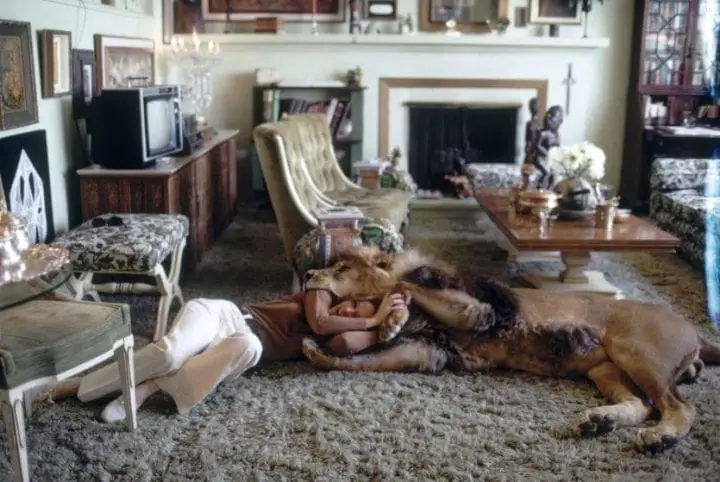
Michael Rougier
He stayed at their house for four or five days at a time, with his owner Oxley. He ate as much as 12 pounds of meat a day, to keep him constantly satiated. Neil had the run of the house; there wasn’t a room he wasn’t allowed in. But Neil was lulling them into believing all lions were good roommates.
10. Neil the lion moved right in, even sleeping in Melanie Griffith’s bed
In 1971, a photographer from LIFE magazine came and documented their life with Neil. The photos show Hedren and Griffith playing with Neil in the pool, reading with him, sleeping with him, and even wrestling with him. Neil disrupted Marshall’s work in the study and stared at the open fridge, like any human looking desperately for something new to appear.
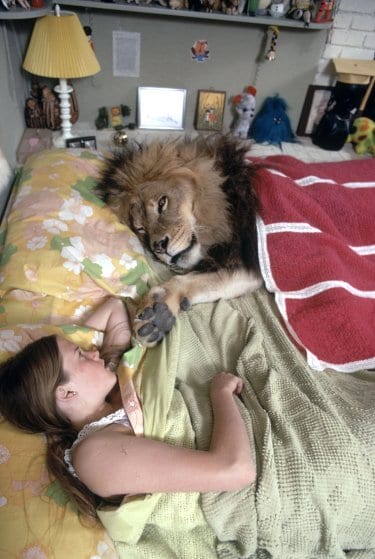
Michael Rougier
While they lived with him, Neil never hurt any member of the family. Griffith, about 14 at the time, even called Neil her best friend. One time, he attacked Oxley in the kitchen, but the two worked it out. This experiment was a huge success for Hedren and Marshall, so they decided to get their very own lion.
11. Soon enough, Tippi had six lion cubs in her house
At the time, Hedren and her husband were living in Sherman Oaks, a Los Angeles neighborhood north of Beverly Hills, with Hedren’s daughter and Marshall’s teenage sons. Their first lion was Casey, a four week old cub, who’s owners no longer wanted him. But they certainly didn’t stop at Casey.
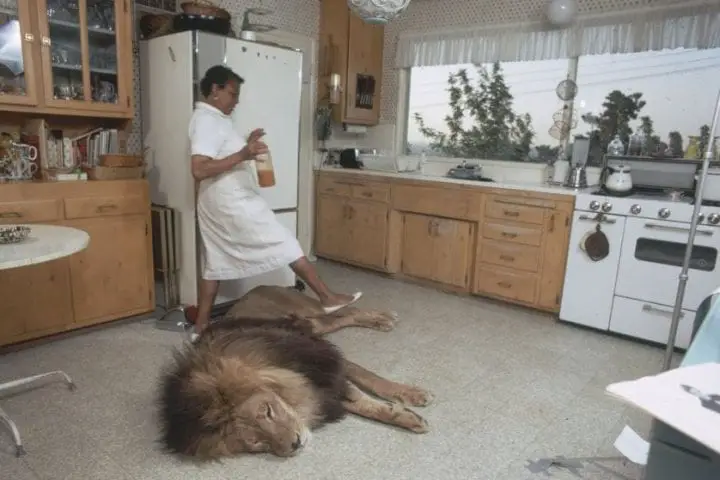
Michael Rougier
Soon enough, the family also got Needra, a cub from the American safari park Lion Country Safari. Then they got Ike and Mike and then Trans and Bridget. Before long, there were six lion cubs running around their house. That’s six lion cubs too many for most people! But Hedren always loved animals, so she was ready to take it to the next level.
12. The family loved the cubs, but their neighbors did not
Living with the cubs was hectic and Hedren quickly had to say goodbye to a tidy house. The little lions leaped around the house and played tug of war with the blankets. They peaked over the yard’s fence and thoroughly scared Hedren’s neighbors. Plus, they didn’t always play nice.
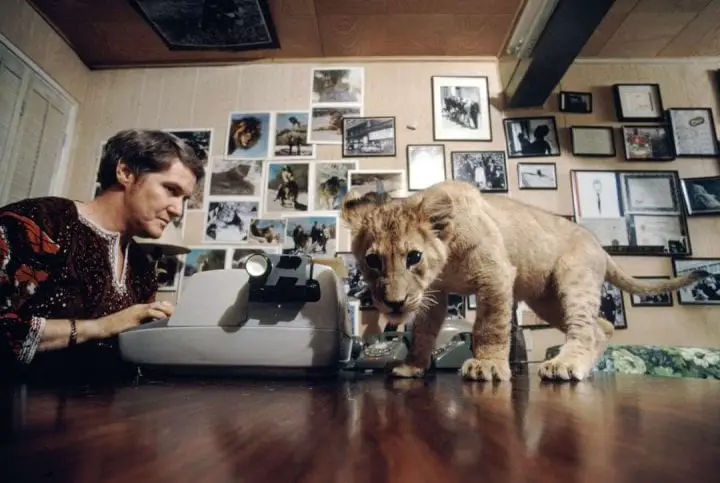
Michael Rougier
Hedren and her family all got hurt one way or another. “We don’t blame the cats,” said Hedren. “At first we just didn’t know enough about them to stay out of trouble. But it was always a case of love at first bite, and we learned fast.” However, the neighbors did not love the cubs, and the family was forced to move after getting complaints.
13. Tippi and her family moved to a ranch and got even more animals
Hedren, Marshall, the kids, and the lions packed up and moved about 40 miles north of Los Angeles to a ranch in Acton, California. There, they converted the desert environment to something more Africa-like, with trees, lakes, and hills. They then went about acquiring even more animals.
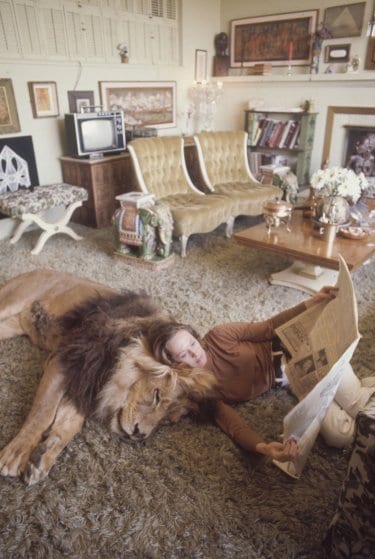
Michael Rougier
They got big cats from zoos, circuses, animal control officers, and people who didn’t want them as pets anymore. But the family didn’t stop at lions. They got tigers, leopards, black panthers, jaguars, cougars, cheetahs, elephants, flamingos, ostriches, black swans, Canadian geese, cranes, peacocks, and a marabou stork. Once they had enough cats, they began filming the movie.
14. They began producing perhaps the most dangerous movie ever made
Finally, years after Hedren and Marshall first saw the lions in Africa, they began production on their movie in 1976. It was a family affair, starring Noel Marshall, Tippi Hedren, Melanie Griffith, and Marshall’s sons John and Jerry. They had all prepared for their roles by living with the big cats for years, making the real stars of the movie comfortable with the human actors.
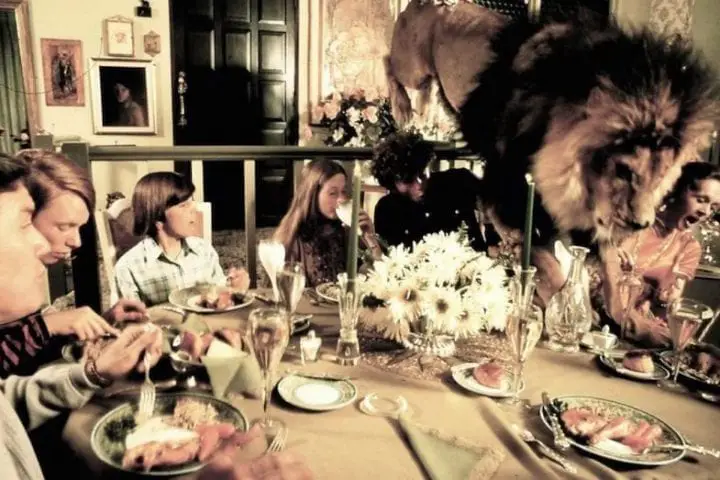
Michael Rougier
Marshall had prepared for the movie (officially named “Roar”) and partially funded it by producing “The Exorcist.” In addition to the Hedren-Marshall family, about a hundred people and 150 animals worked on the film. They estimated it would take maybe six to nine months to film, but they could not have been more wrong.
15. The cats weren’t directed, they just did what they wanted to do
“Roar” defies genre. It doesn’t quite fit into any set category: it’s largely action and adventure, but it has elements of horror and even slapstick comedy. Plus, the way it was filmed kind of makes it (almost) a documentary. Of course, the people all had their lines and direction, but the animals did not.
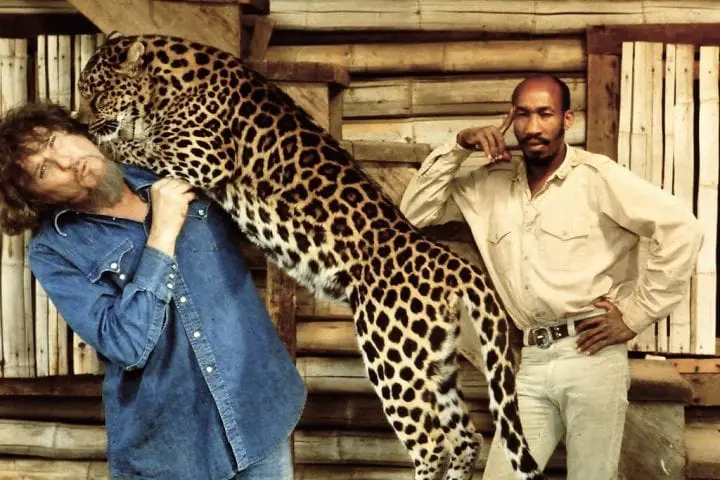
ROAR the movie/Flickr
None of the animals were trained and Marshall, who also directed it, would just let them do whatever they wanted. So sometimes the crew put hours into setting up all the equipment and they couldn’t get any usable shots, because the cats did nothing. Other times, the cats acted so quickly that the five cameras missed the shot. The cats even got writing credits.
16. It was a very difficult movie to film, mostly because of the 150 animals
Most of the movie was shot in California, on the ranch and in the Hedren-Marshall house, but a few shots were taken in Africa. Since the filming was driven by whether or not the cats decided to do something interesting, nine months stretched to a total of five years of shooting.
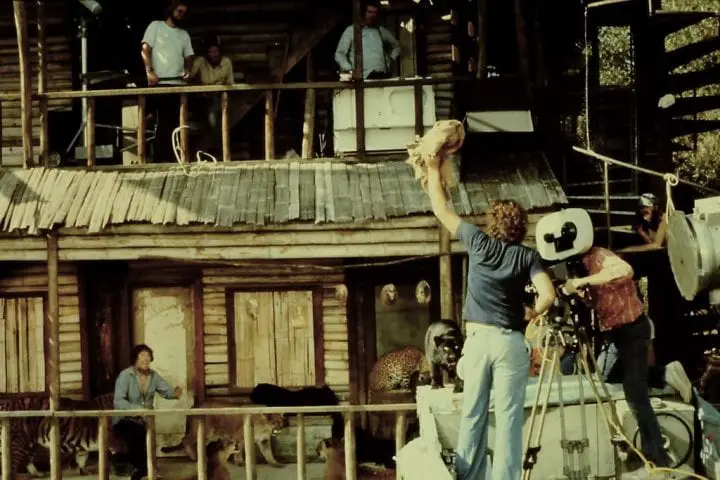
ROAR the movie/Flickr
There were tons of technical problems while shooting, like how to keep each camera out of view from the other four. In Autumn, they had to spray paint the leaves green, to keep consistency on set. However, the biggest problem on set was not the cameras or leaves, but (as anyone would expect) the 100 or so big cats.
17. No animals were hurt during filming, but plenty of people were
Decades after Roar came out, it was advertised with the slogan, “No animals were hurt during the filming, but over 70 people were injured.” Hedren denies that this many people were injured, but there certainly was a lot of damage done to the cast.
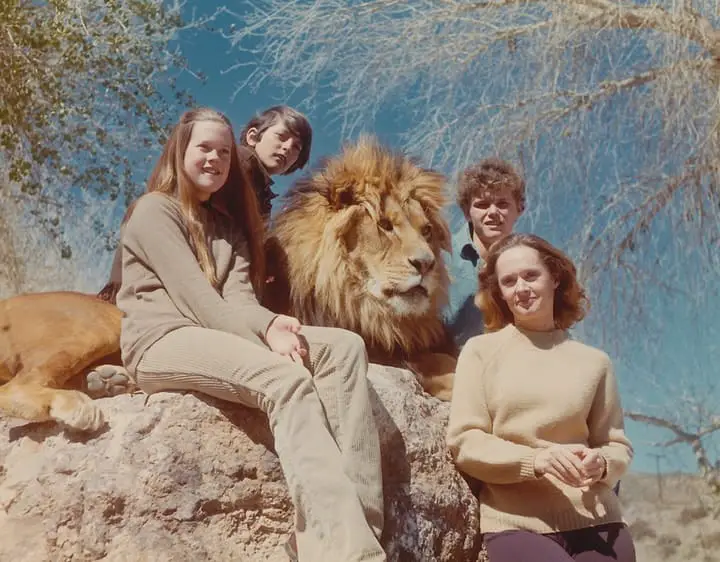
ROAR the movie/Flickr
Every shot of Roar is real, so when the plot consists entirely of the family running and hiding and getting mauled by cats, that’s not movie magic. “You’re fine with lions and tigers as long as you don’t show any fear,” John Marshall said. “The problem is that the plot required us to show fear. These animals who had learned to respect us were totally confused when we started acting terrified.”
18. An elephant threw Tippi with its trunk and broke her leg
Tippi Hedren herself suffered injuries on set, although her broken leg was due to an elephant and not the many, many lions and tigers and panthers on set. In one scene, Hedren purposefully falls off an elephant’s back, but during one take the elephant Tembo grabbed her leg with his trunk and threw her.
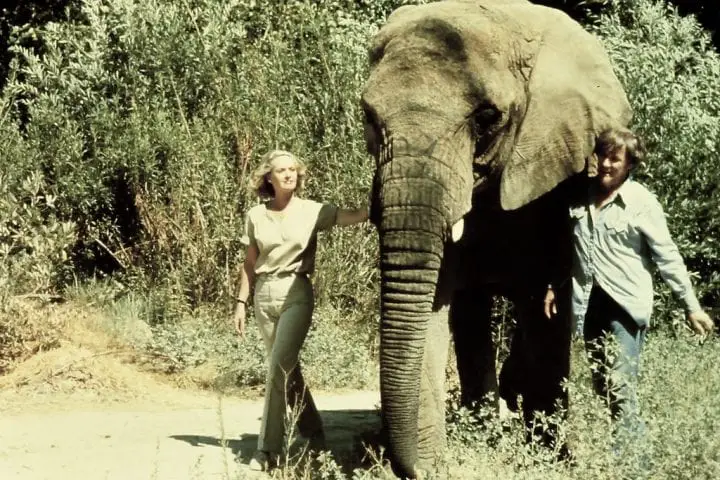
ROAR the movie/Flickr
“It really was a freak accident,” Hedren said. “I’ve ridden him before and never fallen. That’s what went wrong. He just couldn’t understand why I kept screaming and falling off while the cameras were rolling.” She had nightmares afterward, but that didn’t stop her from filming, because she was obsessed with finishing the movie.
19. Despite being trampled and attacked, Tippi said the movie was worth it
But Tippi’s battering didn’t stop at the elephant tumble. In the movie, she falls into a tiger-occupied lake. In another scene she’s walked on and stepped on by like 35 lions. One of the riskier scenes was her waking up to a black panther licking honey off her face. “It’s amazing no one was killed,” Hedren later said about the movie.
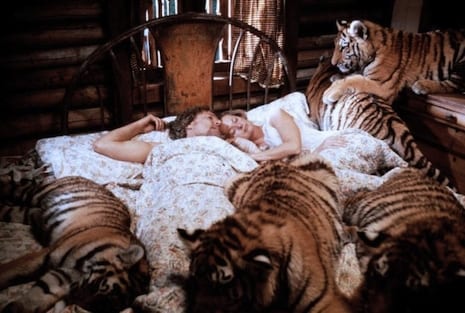
Roar/Dangerous Minds
At some point, she got head wounds from a lion biting her. “Now I laugh along with everyone else when I see those scenes,” Hedren said, “although they weren’t always fun to shoot. “Roar” was the toughest movie of my life. But it was worth it.”
20. Melanie Griffith said the lions upstaged her, but they also mauled her
Melanie Griffith may have had it worse than her mother. At one point during filming, she left the movie, telling Hedren, “Mother, I don’t want to come out of this with half a face.” But she eventually came back to film. And when she did, she was mauled and needed stitches and (ironically) facial reconstructive surgery.
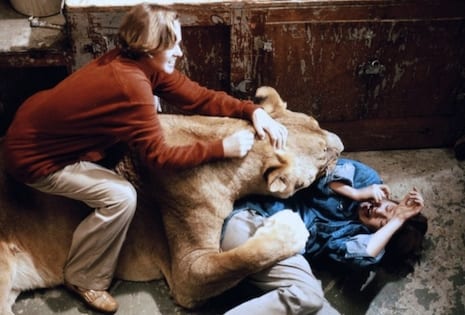
Roar/Dangerous Minds
“Lions are a really tough act to play with,” Griffith said. “Not because they are dangerous, but because they are so funny. They upstage you every time. If you are in a shot with a lion you just know everyone is looking at the cat instead of you.”
21. The movie is tense because the actors aren’t acting, they’re actually that scared
Not surprisingly, Griffith wasn’t the only one to quit the movie. After a very bad day, the entire crew sometimes quit. The director, Hedren’s husband Noel Marshall, was not the kindest. His son later said that Marshall wouldn’t call “cut” when his own family members cried for help. But he got his own injuries, and even suffered gangrene because of the many bites and scratches.
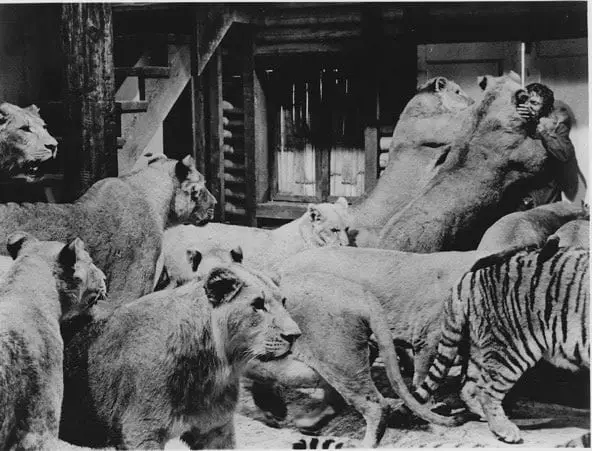
ROAR the movie/Flickr
Tim League, who later re-released “Roar” said of the movie, “One of the elements that makes viewing “Roar” so tense is that every performance is heightened. Actors can be delivering the simplest line of dialogue, but the pitch is ratcheted up about 20 percent above normal and there is a constant manic energy. You can see real fear in everyone’s eyes and hear it in their on-camera pleas for help.”
22. John said it seemed like a good idea at first, but then had to have a lion pulled off him
In one scene, Marshall’s son John trips and falls face-first in the grass. He had been walking next to a lion, who then jumps on him and closes his jaws on John’s head. “I looked up and there was blood on his teeth. It took six guys to pull him off me and I got 56 stitches. I had to work with that lion on and off for five years because we kept running out of money,” John said.
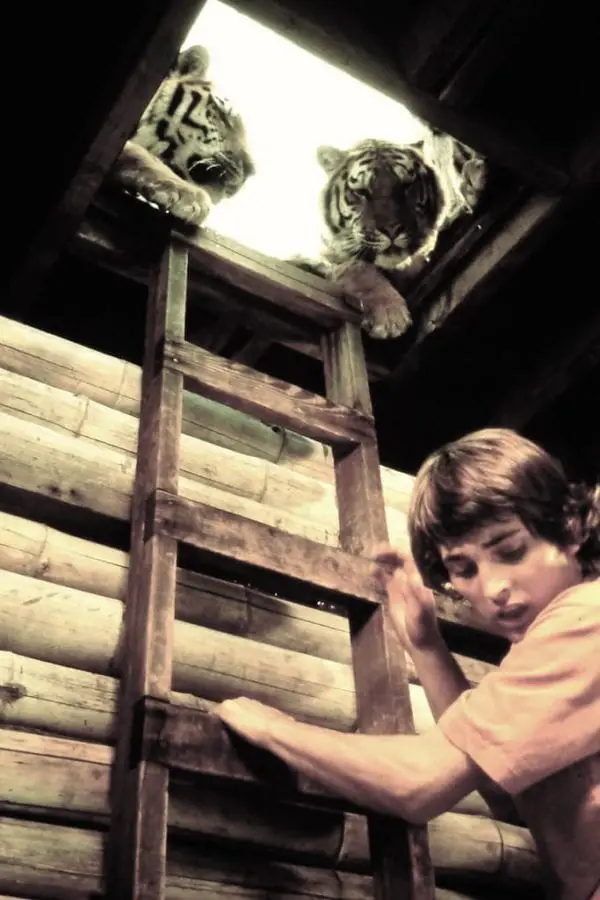
ROAR the movie/Flickr
About the movie, John seems to have mixed feelings. “It seemed like a really cool idea at the beginning, but it was dangerous,” said John Marshall. “Don’t get me wrong, I had a wonderful time. But it was stupid.” Sounds like almost anything a teenage boy does, only his “really cool idea” involved lions. Also it was his dad’s idea.
23. “Roar” had terrible luck and was enormously expensive for how much it made
“Roar” was plagued with more than just animal-related injuries. It had its fair share of bad luck in other categories: flood, fire, and finance. Two years into filming, the whole ranch flooded. Hedren’s house and things all washed away. The set and equipment were ruined. The flood reportedly cost them $4.5 million.
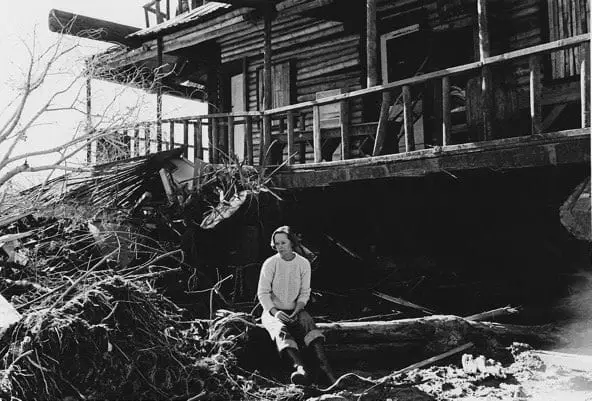
ROAR the movie/Flickr
During the huge flood, a few lions escaped the ranch and, unluckily for them, they were shot and killed by law enforcement. Around this time, the financiers pulled out of the movie. Hedren and Marshall were left to fund it themselves, so they sold most of their assets. Plus, they had two wildfires on the ranch during filming. But Hedren was obsessed with finishing the movie.
24. Tippi started The Roar Foundation to support all the animals after filming was over
Several years and $17 million later, “Roar” was finally done. The movie came out in 1981, but wasn’t shown in American theaters. It only made $2 million. Hedren and Marshall divorced soon after the movie came out and Hedren started The Roar Foundation to raise money for all the animals that were now out of a job.
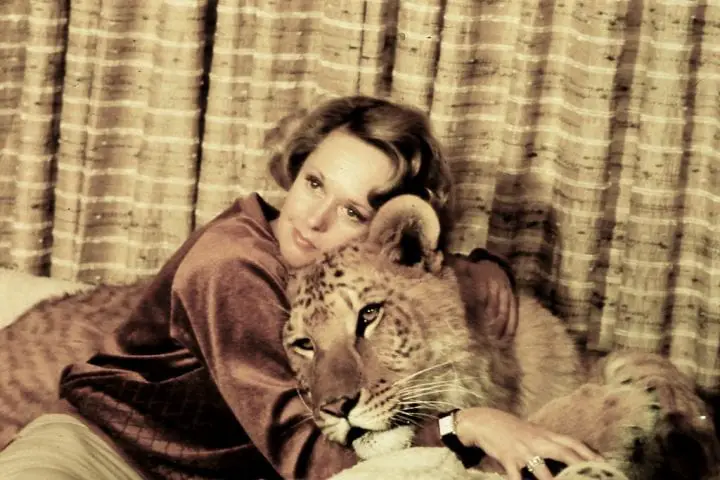
ROAR the movie/Flickr
She had already made her ranch into The Shambala Preserve, a home for displaced exotic animals in the United States, but now used the Foundation to fund it. “Shambala” means “a meeting place of peace and harmony for all beings, animal and human” in ancient Sanskrit.
25. Tippi wrote a memoir that was basically a how-to guide for raising big cats
Hedren wrote a memoir about the big cats, called “The Cats of Shambala.” In it, she gives detailed information about how to raise the different types of big cats. She writes about the various noises young cheetahs, tigers, and lions make. “I miss nursing the cubs very much,” she said. “I really treasure that experience. There’s nothing sweeter than a little baby lion or tiger cub. They’re magical.”
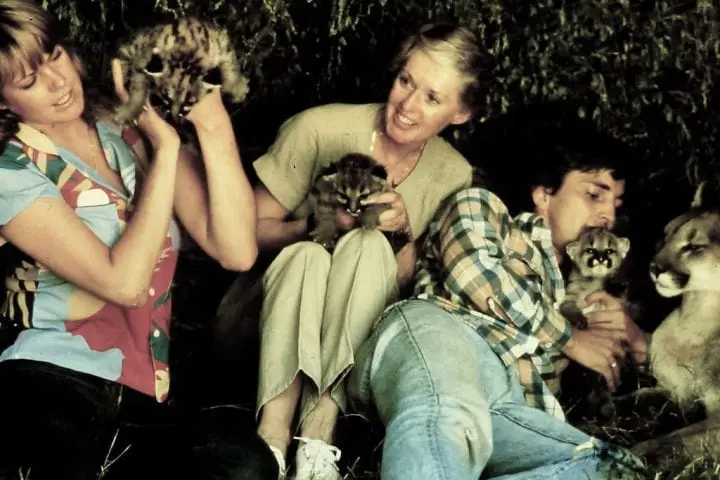
ROAR the movie/Flickr
She gives a variety of tips, like if a lion escapes, you should pretend to limp. This will draw the lion close to you, so you can then get a leash around its neck. She also says one of the most important rules about being around big cats, is to never “turn your back on a sleeping lion or tiger.”
26. Tippi is now against keeping lions as pets
Ironically, The Shambala Preserve advocates against keeping exotic animals as pets. Hedren now regrets keeping the big cats in the house. “I cringe when I see those pictures now,” she said. “We were stupid beyond belief. We should never have taken those risks. These animals are so fast, and if they decide to go after you, nothing but a bullet to the brain will stop them.”
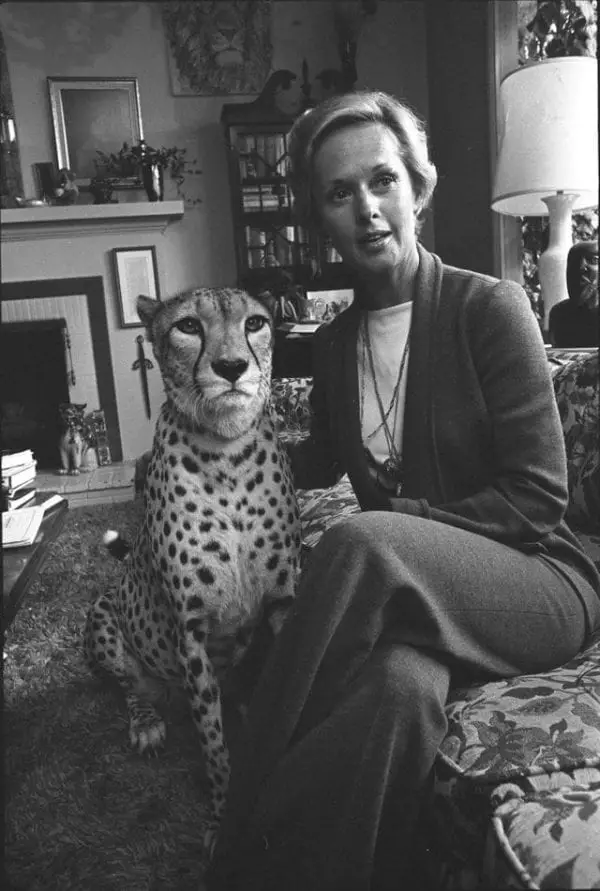
Reddit
But she loves the big cats and still devotes most of her time to The Preserve. She lives in a cottage on the 80-acre land, surrounded by the enclosures housing the various animals. While at the beginning she was very hands-on with the cats, now she has a no contact policy.
27. Tippi works to get big cat friendly legislature through Congress
Hedren doesn’t just work with the animals on her land, which come from private owners or were confiscated by a government department, she also works to teach people about animal rights. Plus, she supports and pushes legislature in favor of the welfare of animals through Congress.
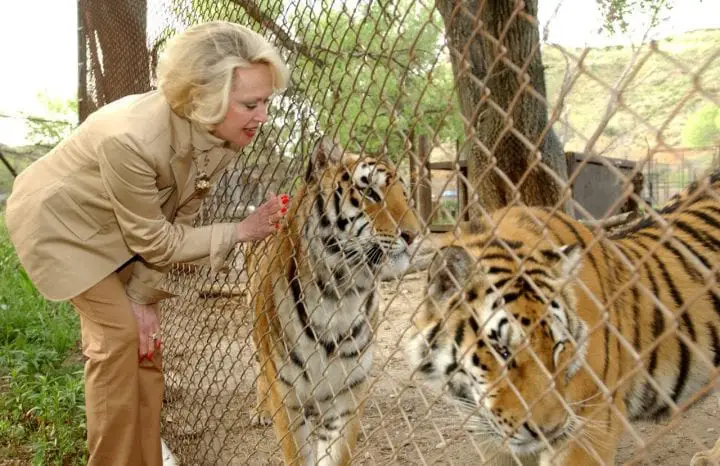
Time Out
The Captive Wildlife Safety Act was successful in 2003. It outlawed the trafficking and movement of big cats between states. It’s aim was to curb the breeding and selling of these cats. She’s currently working on getting the Big Cats and Public Safety Protection Act passed, which would end private ownership and breeding of big cats.
28. There are more captive tigers in the U.S. than wild tigers in the world
Lions are considered vulnerable to extinction, with their numbers in the wild decreasing. There are about 30,000 adult lions in the wild, but habitat loss and depleted prey are threatening them. Plus, some people use lion body parts for medicine. But they’re doing great compared to tigers.
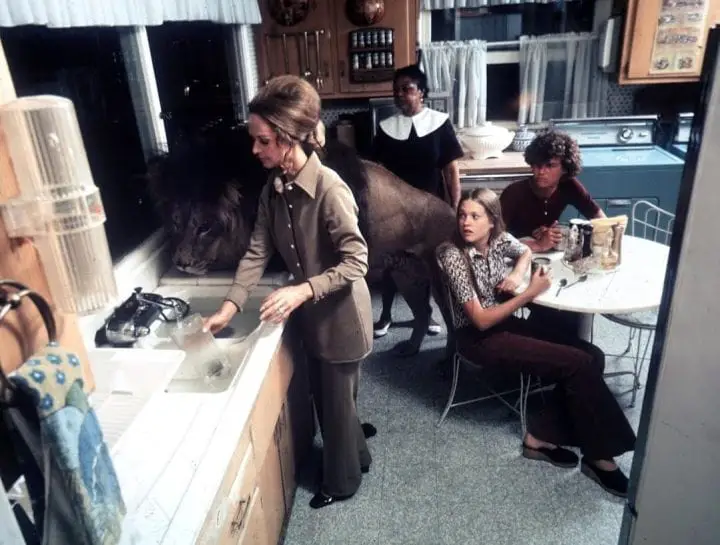
Michael Rougier
There are actually more captive tigers (5,000 or more) in the United States than wild tigers in the world (around 3,000). Tigers are officially endangered because they’re killed for their skins, bones, and meat. Only about 350 of those captive tigers are actually in legit zoos and preserves, while a lot are kept as pets or for entertainment.
29. Some states don’t regulate big cat ownership at all
There are only 30 states that ban the ownership of big cats. Some have restrictions or require permits, but a handful don’t even regulate private ownership of big cats. People have even bought tiger cubs at truck stops. Most of the captive tigers in the U.S. live in very poor conditions and almost all are from breeders within the country, not taken from the wild.
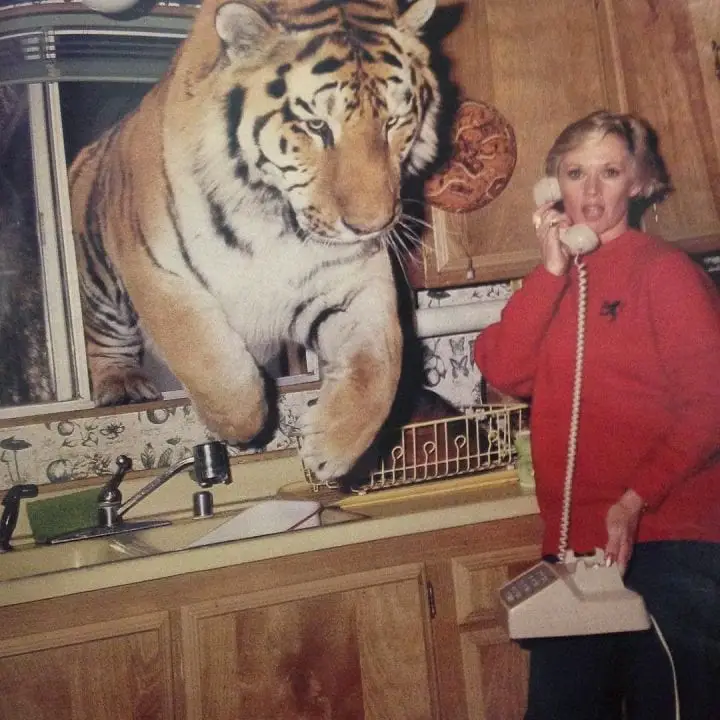
Pinterest
Hedren said the exotic animal business in the U.S. is just as big as the illegal drug business. But, there is good news. Big cat ownership appears to be decreasing, at least in the U.S. However, there are problems for lions and tigers elsewhere in the world. For example, in China there are tiger farms that raise the cats to be killed for their skin and bones.
30. “Roar” was re-released in theaters in 2016
Tim League, the founder of Alamo Drafthouse theaters, re-released “Roar” 35 years after it was first released. He worked with John Marshall, son of director Noel Marshall, on the project. “Tippi and Melanie kind of want to forget about the whole thing,” John said. “I still get nightmares when I watch ‘Roar,’ so I don’t see it too often.”
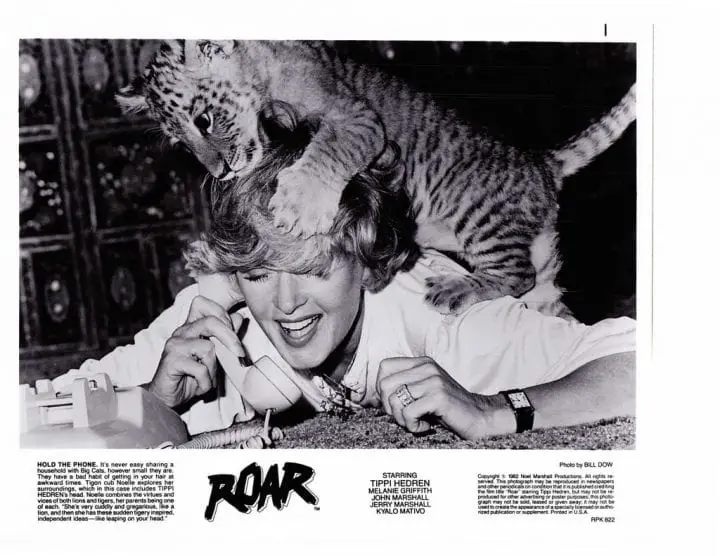
ROAR the movie/Flickr
“It was amazing to live through that,” John said. “I should have died many times. But I kind of want to do it again.” The re-release had a new trailer, posters, and slogan. It was the first time “Roar” was shown in American theaters. Whether it actually made a difference in animal conservation remains to be seen.